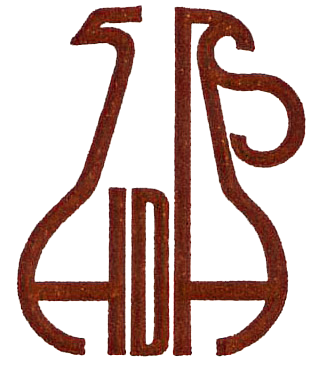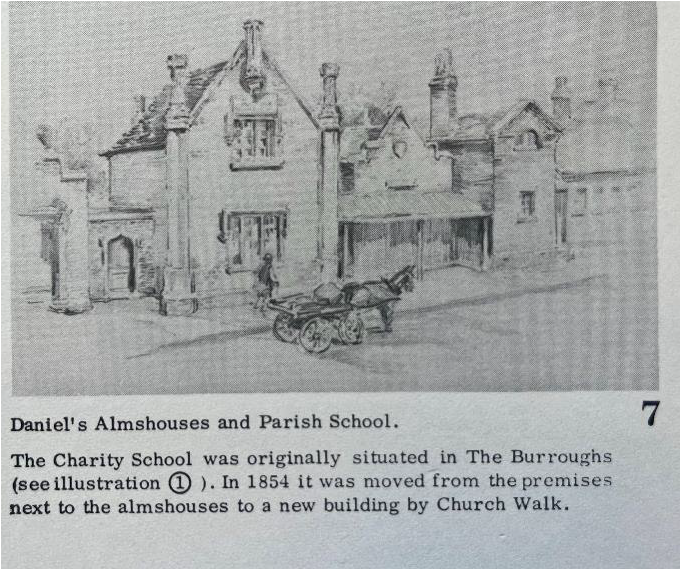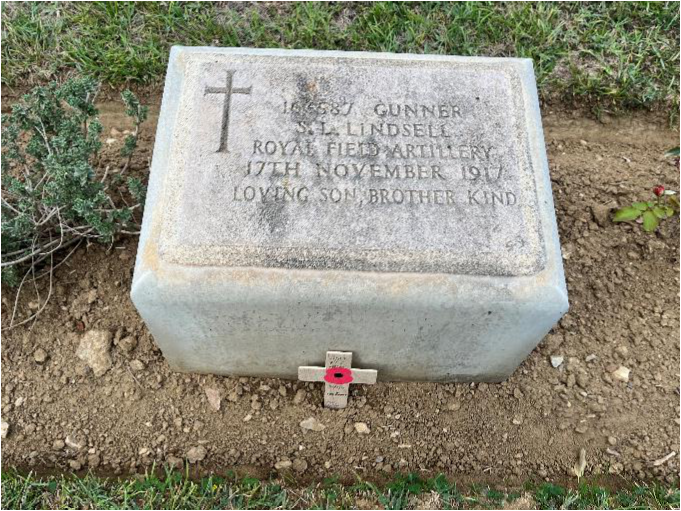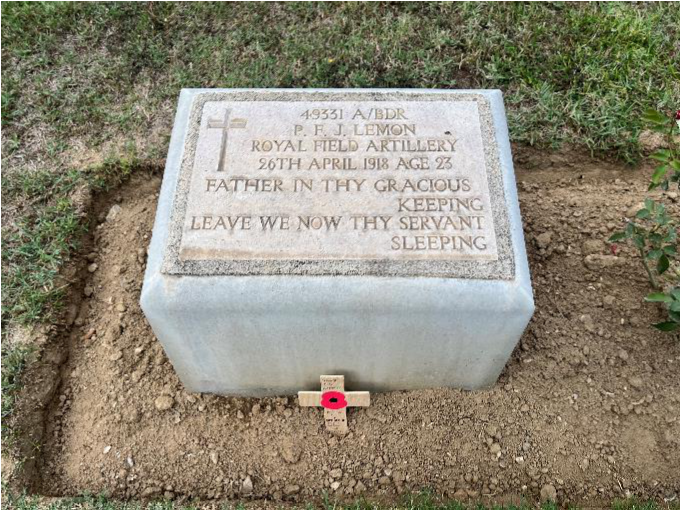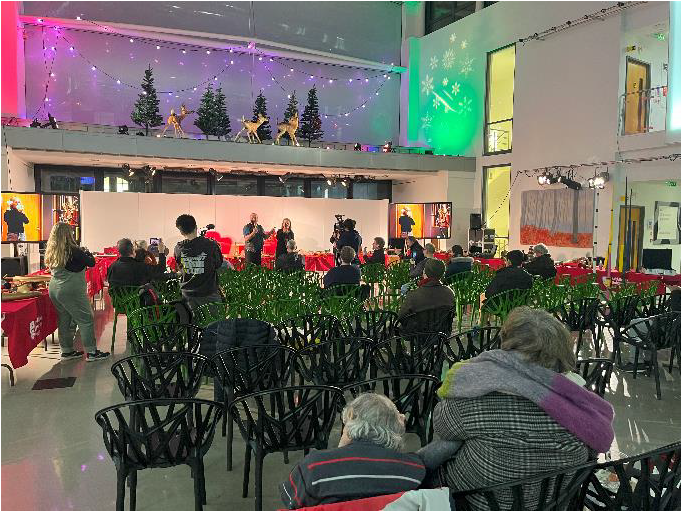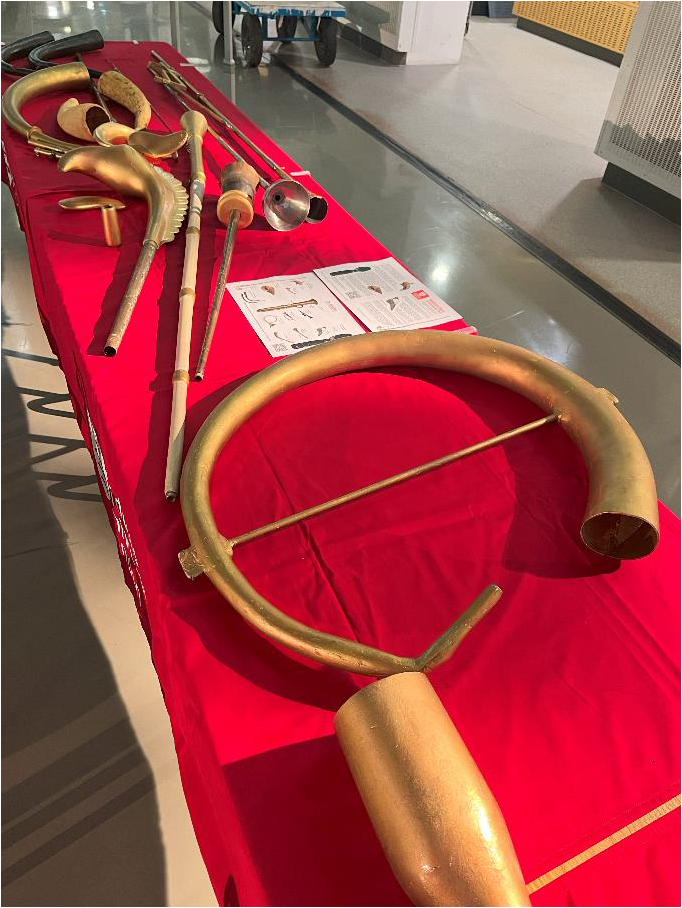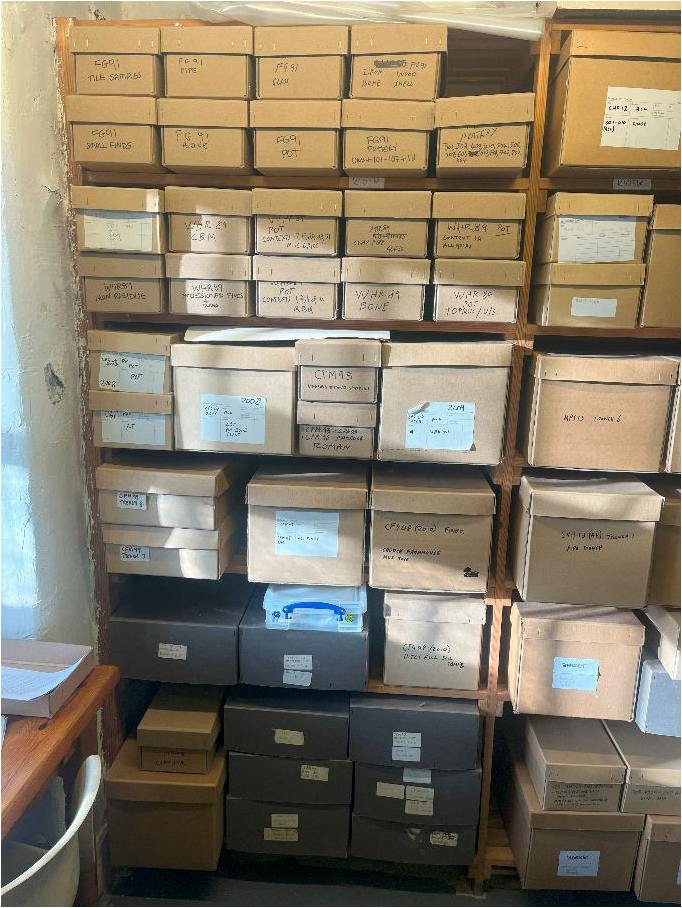
No. 647 February 2025 Edited by Andy Simpson
HADAS DIARY – Forthcoming Lectures and Events
Tuesday 11 February 2025 Nick PeaceyThe Highgate Wood Kiln’s Site. See article in November2024 issue of the HADAS newsletter (NL No.644)
Tuesday 11 March 2025 Robert Stephenson (Vice Chair, CoLAS) London’s Most Curious Stones and Bones London possesses many unusual and out-of-place stones as well as several curious bones and burial places, all of which have fascinating tales to tell.
Tuesday 8 April 2025 Hugh Petrie (London Borough of Barnet Heritage Development Officer) Mapping the Kingdom The colourful maps of the first County Series were one of the greatest feats of the Victorian period. This lecture is the story of the first large scale survey of England made in the 1860s at 1:2500 or 25,344 Inches to the mile. The lecture looks at how and why the survey was carried out, the people who made it happen, from the labourers through to the sappers and officers of the Royal Engineers, and how the maps tell us about local history, using maps from the local studies collection of the London Borough of Barnet.
Tuesday 13 May Les Capon (AOC Archaeology) A community/HLF excavation at Cranford, Hillingdon with trenching over four seasons that discovered Romano-British roundhouses,Saxon Houses, medieval and Tudor and post-medieval remains and intact cellars. Encompassing the Bronze Age to the 19th Century.
Weekend of 7-8 June 2025 It’s back! Barnet Medieval Festival at Lewis of London Ice Cream Farm,Galley Lane, Barnet, Herts EN5 4RA Note new venue – not Barnet Rugby club as before due to redevelopment. Barnet Medieval Festival – Reenactment of the Battle of Barnet 1471
Tuesday 10 June 2025 HADAS Annual General Meeting
Lectures held in the Drawing Room, Avenue House, 17 East End Road, Finchley N3 3QE. 7.45 for 8pm.
Buses 82, 125, 143, 326, 382, and 460 pass close by, and it is a five-ten-minute walk from Finchley Central Station on the Barnet Branch of the Northern Line where the Super Loop SL10 express bus from North Finchley to Harrow also stops.
Tea/Coffee/biscuits available for purchase after each talk.
1
BENNET’S SCHOOL UPDATE ANDY SIMPSON
Sue Loveday has found another contemporary image of the buildings, viewed from another angle; this was originally reproduced in an education pack produced for the former and much missed Church Farm Museum.
It is possible that the substantial E-W brick wall foundation found in trench 2, shown in the previous edition of the newsletter, is for the rear wall of the elaborately fronted block visible on the left, with the wall footings in Trench One being part of the lower gabled building situated between there and the still extant almshouses.
Good progress continues to be made with the post excavation work; all finds have now been washed, marked, sorted and bagged, and the finds record sheets completed, and detailed analysis of the clay pipe, small finds, pottery, glass and building materials underway so reports can be written on these categories; the clay pipe, glass and building materials reports have now been written and will be published along with the full excavation report in due course. The Sunday team undertaking this work meet most Sundays, 10.30 am – 1pm (ish) and visitors are welcome.
2
‘His Name Liveth for Ever in Hendon’ Revisited Andy Simpson
In the February 2023 newsletter, No.623, I discussed the four men from Hendon buried in Greece having been casualties in the lesser-known Salonika Campaign of 1915-1918. Full biographical and service details for each man are given in that article.
In September 2024 I was able to once again join a battlefield tour of the area run by the Salonika Campaign Society (SCS), led by Chairman and former RAFM colleague Alan Wakefield, now Head of the First World War Dept at the Imperial War Museum, and pay my respects and place a poppy at the graves of all four men and give a short ‘stand’ (presentation) on each of them to members of the group.
35729 Gunner Ralph Henry Byatt Plot 767, Lembett Road CWGC cemetery, Thessaloniki, Greece
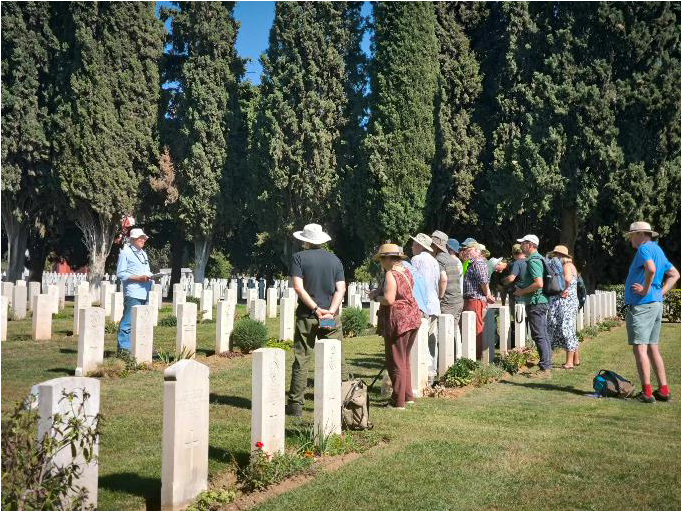
3
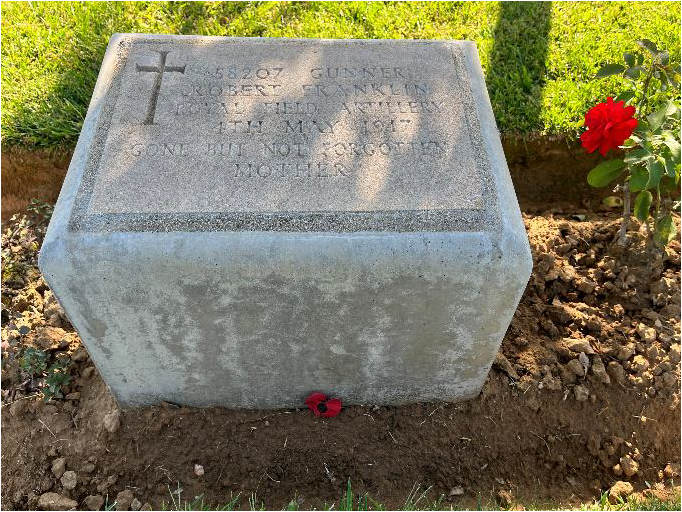
(Tricky lighting conditions; Date of death given as 4th May 1917; Dedication reads ‘Gone But Not Forgotten Mother’)
Note the different form of grave marker used in these other two cemeteries; as explained on the CWGC website;
FLAT HEADSTONE MARKERS
A flat, or recumbent, marker can be used to display multiple casualties in one spot, either in the event of a lack of space in the cemetery or where multiple casualties have been buried together, where there were many burials in a limited space, meaning flat markers were required to prevent an overcrowded feel that would’ve come from individual headstones.
They can also be used on sites where the soil or weather conditions are unable to support the usual standing headstones. The Commonwealth War Graves Commission | CWGC.
4
On a previous visit to this cemetery in September 2013, Society members saw extensive work underway to renovate the cemetery including all new grave markers and inscriptions, which were the ones seen in 2024.
5
Also buried at Karasouli, on the opposite side of the Cemetery;
Roots of writing traced to 6,000 years ago
The history of human writing has been ‘rewritten’ after archaeologists studied engravings on 6,000-year-old cylinders used by accountants.
The earliest known writing system is thought to be Sumerian cuneiform, which developed around the region of present-day Iraq, dating to around 3350-3000BC. Experts have linked early cuneiform symbols to designs that appear on cylinder seals between 4400-3400BC, a millennium earlier.
Similar images representing words such as wine vessels, buildings, nets and reeds were seen on cylinders from Uruk, one of the earliest cities in Mesopotamia, and in early cuneiform.
The University of Bologna study was published in the journal Antiquity.
SOURCE: Daily Telegraph, 9 November 2024, item edited by Stewart Wild
6
Medieval chiefs melted assets into money
Medieval chieftains melted prize possessions into silver coins in an early example of quantitative easing, Cambridge University research has found.
Between AD660 and AD750 thousands of silver coins were minted in Anglo-Saxon England. A chemical and isotopic analysis of the metal shows that it originated in the Byzantine eastern Mediterranean and was originally brought to England as ornate silver objects such as the intricate bowls found in the Sutton Hoo burial. Experts believe that elite families literally liquidated their assets, melting silver goods and making coins to boost the economy and encourage trade among the burgeoning rich farming classes.
Sutton Hoo’s Byzantine silver objects alone weigh just over 22lb (10kg) and could have produced 10,000 early pennies when melted down, the experts said.
Dr Jane Kershaw, from the University of Oxford, said: “This was quantitative easing – elites were liquidating resources and pouring more and more money into circulation.”
Rory Naismith, professor of early medieval English history at Cambridge, said: “The money supply in early medieval Britain and the rest of western Europe was relatively low, so putting more into circulation stimulated the economy. Something that couldn’t happen without more coins at this time was the rapid growth of towns and trade across eastern England and the North Sea.”
The coins are held by the Fitzwilliam Museum in Cambridge. The findings were published in the journal Antiquity.
SOURCE: Daily Telegraph, 5 April 2024, item edited by Stewart Wild
Other Societies’ Events Eric Morgan
As always, please check with the societies – for example via their websites – before planning to attend in case of any late changes, since not all societies and organisations have returned to pre-covid conditions.
Monday February 10th, 3 pm. Barnet Museum and Local History Society. St. John the Baptist Church, Chipping Barnet, Corner High Street/Wood Street, Barnet. EN5 4BW. The Art of Class War – Looking at the Miners’ Strike through the eyes of Cartoonists from the Right and the Left. Talk by Nick Jones. For further information please visit www.barnetmuseum.org.uk.
Friday 14th February, 7.30 pm. Enfield Archaeological Society. Jubilee Hall, 2 Parsonage Lane/Junction Chase Side, Enfield. EN2 0AJ. Landscape of Defence. Talk by Stuart Brookes (U.C.L. I.O.A). Please visit www.enfarchsoc.org for further details.
Saturday 22nd February, 11 am. – 4 pm. Lauderdale House, Waterlow Park, Highgate Hill. London. N6 5HG. Heritage Weekend – Free. Discover the history of Highgate and North London, with special talks. Lots of stalls including Camden History Society, Hornsey Historical Society, Highgate Society, Highgate Literary and Scientific Institute, Friends of Highgate Roman Kiln, Friends of Kenwood, Friends of Bruce Castle Museum, u3a North London Branch and many more. For further details please visit www.lauderdalehouse.org.uk or telephone 0208 348 8716.
7
MUSIC NIGHT ANDY SIMPSON
On Monday 9 December 2024, The Editor, Sue Loveday and Eric Morgan from HADAS attended an unusual and informative free event in the Grove Atrium on the Middlesex University campus on the Burroughs in Hendon. This was a Music Archaeology Day ‘to celebrate and explore the fascinating world of reconstructed ancient brass instruments’ Led by local resident Dr. Peter Holmes it featured live demonstrations in the evening and, earlier in the day, a musical handling session and tour of the well-equipped Grove Building workshop facilities including 3-D printing equipment used by the MADET – Music Archaeology Design Engineering Team – to produce some of the instruments.
Dr Holmes is one of the world’s leading experts on ancient lip-blown instruments and has pioneered this field for over 50 years, travelling the world analysing instruments and instrument fragments. He looks at how they were made and played, and what they meant to people at the time. Several full-sized instruments and replicas were shown and played, including a Roman military Cornu used in the recent blockbuster Gladiator II film. He was joined for the evening event by Simon O’Dwyer and a fellow practitioner from Ireland, who played a haunting duet on two horns representing the Bronze Age sun god joining with the earth goddess as might have been heard at annual fertility celebrations. The Iron Age Karnyx which Boudicca would have heard as she battled the Romans during her revolt was also demonstrated, along with an ancient classical Greek horn.
8
9
Other items on display included a silver mounted trumpet from Nepal crafted from a human thighbone, a Minoan shell trumpet, and more recent instruments including a hunting horn, bugle, and an electronic trumpet made in 2024.
ALL BOXED UP ANDY SIMPSON
Readers will recall that over the past year the West Heath 2 finds, mostly flints, have been re boxed and bagged to standards more in tune with those currently maintained by the Museum of London Archaeological Archive, (still popularly known as the LAARC to many) whose base at Mortimer Wheeler House, Eagle Wharf Road in Hackney has been visited or even volunteered at by many HADAS members, one of whom is even currently employed there.
With the initial large delivery all used up by this, Don Cooper and Bill Bass kindly facilitated a new equally large delivery of boxes, mainly of the standard ‘shoebox’ size of archival standard boxes so that we can re-box more of the collection.
As the photograph below taken early last month in the HADAS basement room at Stephens (Avenue) House in Finchley shows, this is now well underway; in addition to working on the Bennet’s School materiel further discussed elsewhere in this newsletter, some members of the Sunday morning team have been able to sort, re-box and re-bag two significant sites; on the top shelf the mainly post-medieval materiel from the Forge Golders Green Road site dug in 1991, site code FG91.
On the second shelf we have done the same with the also mainly post-medieval materiel from the Whetstone High Road (Studio Cole) dig in 1989-90, site code WHR89. This was the first site dug on by both your editor and Bill Bass when we joined the society back in 1989.
Below this we have made a start on the large quantity of Roman, medieval and post-medieval materiel from several season’s gigging in the grounds of the former, and much – missed, Church Farm Museum, starting in 1993.
The lower two shelves retain some of the remaining old grey archive boxes which have performed sterling service over the past 30 years or so, but do not meet current Museum of London requirements.
These will be replaced in due course. Some displaced by the re-boxing have been donated for further use by a fellow charity, the Highgate Literary and Scientific Institution. We have still marked the boxes individually in ink, although apparently the Museum of London now uses QR codes on the box ends rather than paper labels which can peel and fade.
10
11
MORE EVENTS
Thursday 20th March, 8 pm. Historical Association. Hampstead and N.W. London Branch. Fellowship House, 136A Willifield Way, London. NW11 6YD (off Finchley Road, Temple Fortune). The Army That Never Was – D-Day and The Great Deception. Talk by Taylor Downing (F.R.H.S.) about the extraordinary ploy to fool the enemy into thinking that Normandy was just a sideshow and the real invasion was at the Pas De Calais and the invention of a completely hoax army led by General Patton and the creation of hundreds of dummy landing craft, tanks and aircraft to convince the Germans it was real. Also a hidden link with the cinema Industry. Also on Zoom. Please email Dudley Miles (HADAS) on dudleyramiles@googlemail.com or telephone 07469 754075 for details of link and how to pay (there may be a voluntary charge of £5). Refreshments to be available afterwards.
Saturday 1st March, 9.30 am. – 5 pm. Current Archaeology Live. U.C.L Institute of Education, 20 Bedford Way (off Russell Square) London, WC1H 0A. Wide range of expert speakers sharing latest Archaeological finds and research. Also Archaeology Fair and photography competition from Current World Archaeology . Also the Current Archaeology awards will be announced. Tickets on sale at a standard price of £65. To book please visit www.archaeology.co.uk/live or call 0208 819 5580. The fair has lots of stalls with travel companies, booksellers and other archaeological organisations.
Monday 10th March, 3 pm. Barnet Museum and Local History Society. St. John the Baptist Church (address as for 10th February). A School Girl’s War. Talk by Mary Smith.
Wednesday 12th March, 2.30 pm. Mill Hill Historical Society. Trinity Church, 100 the Broadway, London. NW7 3TB. History of Barnet Town. Talk by Michael Noronha (Chair, Barnet Local History Society). Preceded by the A.G.M. Please visit www.millhill-hs.org.uk.
.
Wednesday 19th February, 7.30 pm. Willesden Local History Society. St. Mary’s Church Hall, bottom of Neasden Lane (Round corner from Magistrates’ Court). London. NW10 2DZ. Never Had It So Good! Talk by Nick Dobson describing London life in the 1950s. For further details please visit
www.willesden-local-history.co.uk.
Thursday 27th March, 7.30 pm. Finchley Society. Drawing Room, Avenue (Stephen’s) House, 17 East End Road, London. N3 3QE. The Silvery Goon. Talk by Jane and Sile Milligan (Spike’s daughters). Spike was the former Patron of the Society and a prolific writer, broadcaster and Comic. Visitors £3. Refreshments in the interval. For further details please visit www.finchleysociety.org.uk.
Thanks to our other contributors this month; Eric Morgan; Stewart Wild.
Hendon and District Archaeological Society
Chair Sandra Claggett, c/o Avenue House, 17 East End Road, Finchley N3 3QE
email : chairman@hadas.org.uk
Hon. Secretary Janet Mortimer 34 Cloister Road, Childs Hill, London NW2 2NP
(07449 978121), email: secretary@hadas.org.uk
Hon. Treasurer Roger Chapman, 50 Summerlee Ave, London N2 9QP (07855 304488),
email: treasurer@hadas.org.uk
Membership Sec. Jim Nelhams, 61 Potters Road, Barnet EN5 5HS (020 8449 7076)
email: membership@hadas.org.uk
Website: www.hadas.org.uk
12
